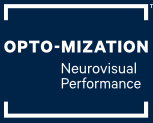Can vision problems cause dyslexia?
Dyslexia is a term that often comes up when your child is struggling with reading, writing and/or spelling. Dyslexia is defined as a problem with accurate and/or fluent word recognition (problems with spelling and decoding). It is tested for by evaluating these abilities. Many people don’t realize that problems with how the eyes track, move, or work together can cause the same symptoms as dyslexia. Even though they see clearly, the information about the words doesn’t accurately make it to the parts of the brain involved in language and decoding. It makes sense that vision and dyslexia are related. Most people with dyslexia do better when given information verbally, when different fonts are used, or when they can see pictures rather
than have to read the words.
Recognition example:
If your child is reading and each eye hits a slightly different part of the word, their brain will receive the wrong information about the order of the letters. The next time they see the word, their eyes may each go to different places, causing them not to recognize a word they just learned a few lines earlier.

Decoding is about putting together the phonetic parts of a word. It involves breaking the word down into chunks. If your child’s eyes cannot accurately jump and track to the right part of the word, they will have a hard time understanding the order of the phonetic sounds.
Reading Fluency:
Is your child struggling with reading fluently? Here is an exercise for you to try on yourself. Take a piece of paper, and cover up all the words to the right of the one you are reading. Read it out loud, and only move the piece of paper to reveal the next word once you’ve read the Figure 12. Struggling reader. Eyes do not move together. Red is right eye, blue is left eye. current word aloud.
What do you notice?
Reading fluency requires the ability to scan ahead of the word you are currently saying, so you can put the correct enunciation of the words. Basically, how you say the word depends on the words that are coming after it.

